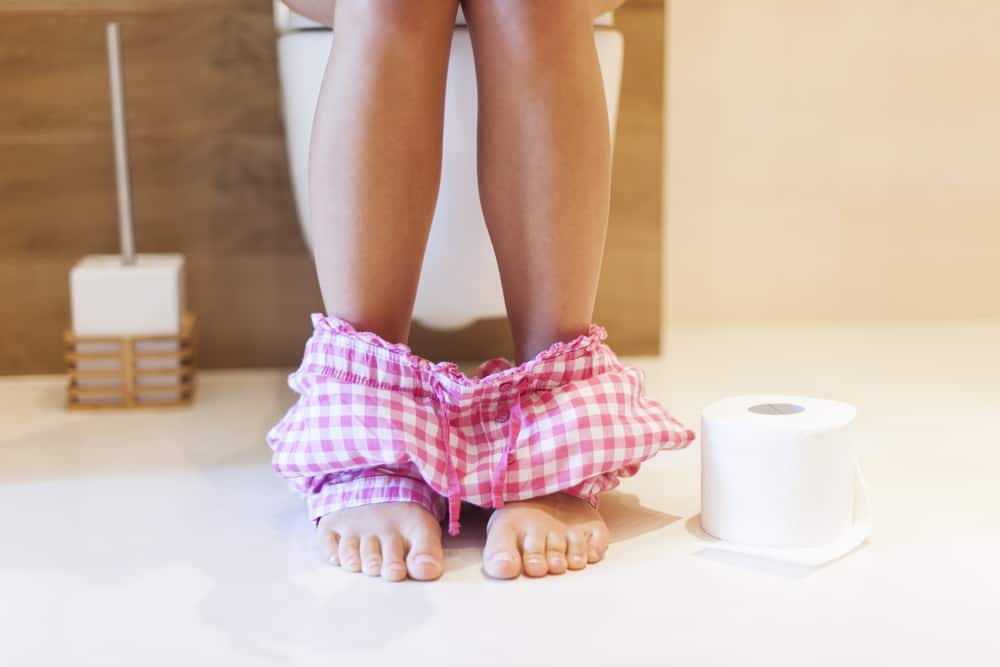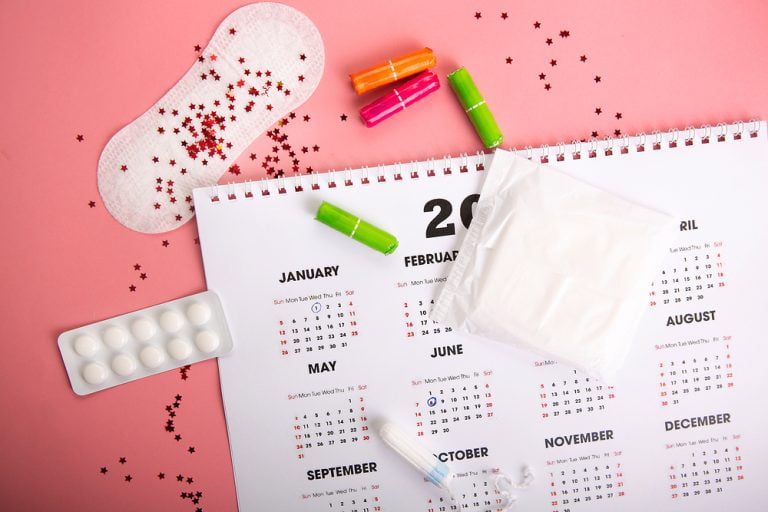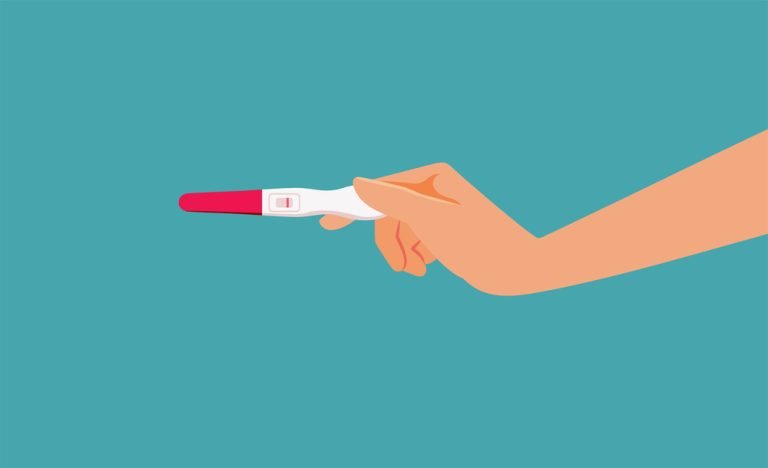Your pee is a great indicator of your overall health. So, seeing white floaty bits in your urine is always something you should investigate. It could even mean that you’re pregnant.
However, there are lots of potential culprits. They range from normal vaginal discharge picked up by your pee to serious infections or even kidney stones.
So, let’s check out the potential causes, how to test for them, and when you should worry.
What Causes White Bits in Urine?
The top 7 reasons why you might have white stuff floating in your pee are:
Pregnancy
Having white particles appear in your urine isn’t a sure sign that you’re pregnant. But it is something that many pregnant women experience.
This is because, during pregnancy, your normal vaginal discharge (leukorrhea) will increase. Then, when you pee, your urine will take some of the discharge with it.
You can check if your discharge is the source of the white particles by showering and then collecting your urine. If the floaty bits have gone, you’ve found your culprit.
Testing for Pregnancy
Simply take a pregnancy test. If it’s positive, you can be fairly certain that those wispy bits are just a bit of extra pregnancy discharge.
Ovulation
Of course, pregnancy isn’t the only time your vaginal discharge increases. During ovulation, your body produces more cervical mucus to provide a better environment for sperm to travel to the egg.
Your pee will pick up this extra discharge and will appear as wispy bits.
Testing for Ovulation
By tracking your cycle, check if the white, stringy stuff in your pee lines up with ovulation.
- If you have regular cycles, ovulation occurs around 14 days before the start of your next period.
- If your cycles are irregular, you can use an at-home test kit or track your basal body temperature.
Urinary Tract Infection (UTI)
A UTI, or cystitis, is usually caused by bacteria entering the urinary tract. However, fungi, parasites, and viruses can also trigger infection.
When you have a UTI, your body will attempt to fight it off with white blood cells. These, along with dead bacteria and tissue debris, will collect as pus and can come out in your pee.
Along with this, other symptoms of a UTI include:
- Pain when urinating.
- More frequent urination.
- Feeling the need to urinate even though you’ve just been.
- Difficulty urinating.
- Passing just a few drops when you pee.
- Blood in your pee.
- Dark, cloudy, or discolored urine.
- Strong-smelling urine.
- Pain in the pelvis or lower abdomen.
- A fever.
Mild infections will pass on their own. But if you develop a fever or see blood, call your doctor. They’ll be able to prescribe antibiotics to treat the infection.
Testing for UTIs
UTIs are easy to detect with simple urine dipsticks. Your doctor can administer these, or you can buy them cheaply online.
Sexually Transmitted Infections (STIs)
Some STIs, like chlamydia, trichomoniasis, and gonorrhea, can cause discharge from your urethra. This can make your pee cloudy or fill it with white floaters.
If you have an STI, you may also notice the following:
- Frequent urination.
- Vaginal itchiness.
- Discomfort during sex.
- Foul-smelling vaginal discharge.
- Green or yellow vaginal discharge.
- Pain during bowel movements.
If you suspect that you have an STI, refrain from unprotected sex and see your doctor. You’ll likely need antibiotics to clear the infection.
Testing for STIs
Your doctor or sexual health clinic can diagnose your STI with a urine test or vaginal swab. Another option is to order an at-home STD test kit, which you can do yourself.
Yeast Infection
A yeast infection, or thrush, is the overgrowth of Candida albicans in the vagina. This fungus is found naturally in healthy vaginas, but too much isn’t good. It can cause:
- Thick, white, cottage cheese-like discharge.
- Itching, redness, and swelling around your vagina.
- Pain when urinating.
- Pain during sex.
Again, this thick discharge can find its way into your pee and appear as floating particles.
Testing for a Yeast Infection
A doctor or pharmacist may diagnose thrush based on your description alone. You can also order an at-home test kit and buy the medication off the shelf.
Bacterial Vaginosis
Bacterial vaginosis is an inflammation of the vagina caused by an imbalance of “good” and “bad” bacteria. Like with thrush, the “bad” bacteria occur naturally but can overgrow in the right conditions.
Symptoms include:
- Thin, gray, or greenish discharge.
- Fishy-smelling discharge.
- Itching.
- Painful urination.
Experts haven’t nailed down one cause of bacterial vaginosis because many things can disrupt the bacterial balance in your vagina. These include:
- Douching.
- Scented soaps or bath products.
- Vaginal deodorant.
- Unwashed sex toys.
- STIs.
- Smoking.
- Wiping incorrectly after a bowel movement (always wipe from front to back).
- Having an Intrauterine device (IUD).
If you suspect bacterial vaginosis, see your doctor. They’ll likely prescribe antibiotics.
Testing for Bacterial Vaginosis
Bacterial vaginosis can be diagnosed by testing the pH of your vagina. Again, this is something your doctor will do, or you can buy an inexpensive kit for use at home.
Kidney Stones
Kidney stones are a solid mass of crystals that collect inside the kidneys. If they get very large, they can cause:
- Severe pain.
- Nausea and vomiting.
- Burning during urination.
- Bloody or cloudy urine.
- Fever.
- An urgent and frequent need to urinate.
- Being unable to produce more than a few drops of urine at a time.
However, many kidney stones are tiny. These can pass painlessly through your urethra and come out in your pee. There, they’ll look like small white deposits.
If you suspect you’re passing small stones, you may wish to make some changes to prevent a large, painful one from forming.
The best way to prevent kidney stones is to:
- Drink enough water, aiming to achieve nearly clear urine.
- Reduce your salt intake.
- Eat citrus fruits to increase the amount of citric acid in your urine.
- Avoid soda and sports drinks.
You should also talk to your doctor. There are many types of kidney stones, and each is treated slightly differently. Some may also be a symptom of an underlying problem with your kidneys.
Testing for Kidney Stones
You will need to visit your doctor for an accurate diagnosis of kidney stones. Your assessment may involve:
- A physical exam.
- Medical history.
- Urinalysis.
- X-ray.
- CT scan.
- Ultrasound.
- Analysis of passed stones.
When to Worry About White Bits Floating in Your Pee
If you’ve spotted some wispy or floaty bits in your pee but have no other symptoms, don’t panic. It’s likely just a bit of discharge or tissue leftover from a mild infection.
You only need to see a doctor if you are also experiencing:
- Abdominal or pelvic pain.
- Pain when urinating.
- Foul-smelling pee or discharge.
- Blood, dark, or discolored pee.
- Fever.
- Vomiting.
- Green or yellow discharge.
- You suspect you have a severe UTI, bacterial vaginosis, kidney stones, or yeast infection that won’t go away.




